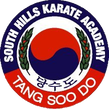Practical Application Of Technique
11/03/13 10:42
During last week’s classes we continued the practice of realistic application by looking at Pyong Ahn Ee Dan Hyung.
In particular, students at the appropriate level and who have been practicing Pyong Ahn Ee Dan took the time to study the back portion of the hyung, especially the techniques contained in the sequence moving down the back center line. We practiced applying the techniques in the following manner:




Beginner students practiced a simple takedown technique contained in Kee Cho Hyung Ill Bu as well as Pyong Ahn Cho Dan. Additionally, I gave our 8th and 7th Gup students an alternative application for the “low knife” blocks contained in Pyong Ahn Cho Dan
It is one thing to understand how to apply the techniques in a realistic combative scenario, however repetitive practice is imperative! Gichen Funakoshi, the father of modern karate-do said it best. He said, “Karate is like boiling water: without heat, it returns to it's tepid state.” Which means that in order to be effective the student of karate-do (Tang Soo Do), must continue to practice or skills will diminish or even be lost.
Also, Kyo Sa Nim’s Wilson and Irson practiced striking drills utilizing punching and kicking targets along with jumping kick techniques during their classes. Our Children’s Classes during the week focused on listening skills with the children practicing and understanding the concepts of how to learn not only in the dojang, but also outside of the karate school. I also gave an impromptu demonstration of the realistic application of technique the children are learning.
Concluding, I am looking forward to our Yu Dan Ja Recertification this week and in particular sharing with our Dan members the practical fighting techniques contained in the Chinto Hyung (Kata). I am sure that they are as well!
Master Gene Garbowsky, Sa Bom Nim
In particular, students at the appropriate level and who have been practicing Pyong Ahn Ee Dan took the time to study the back portion of the hyung, especially the techniques contained in the sequence moving down the back center line. We practiced applying the techniques in the following manner:
- Seizing the initiative or as a defense against a front hand punch. This is the interpretation of the clearing technique following the previous 45 degree “knife hand” technique. This technique sets the opponent up for the techniques that follow
- Using the “ reverse inside to outside” block as a controlling technique. We discussed how difficult it is to use an “inside to outside” block as a blocking technique against any kind of strike by an aggressor. It is virtually impossible so there must be a “true” reason or it wouldn’t be in the form!
- Taking the opponent down and finishing with a reverse punch and a “dropping elbow” technique, which is a more practical application of the last “reverse inside to outside block”




Beginner students practiced a simple takedown technique contained in Kee Cho Hyung Ill Bu as well as Pyong Ahn Cho Dan. Additionally, I gave our 8th and 7th Gup students an alternative application for the “low knife” blocks contained in Pyong Ahn Cho Dan
It is one thing to understand how to apply the techniques in a realistic combative scenario, however repetitive practice is imperative! Gichen Funakoshi, the father of modern karate-do said it best. He said, “Karate is like boiling water: without heat, it returns to it's tepid state.” Which means that in order to be effective the student of karate-do (Tang Soo Do), must continue to practice or skills will diminish or even be lost.
Also, Kyo Sa Nim’s Wilson and Irson practiced striking drills utilizing punching and kicking targets along with jumping kick techniques during their classes. Our Children’s Classes during the week focused on listening skills with the children practicing and understanding the concepts of how to learn not only in the dojang, but also outside of the karate school. I also gave an impromptu demonstration of the realistic application of technique the children are learning.
Concluding, I am looking forward to our Yu Dan Ja Recertification this week and in particular sharing with our Dan members the practical fighting techniques contained in the Chinto Hyung (Kata). I am sure that they are as well!
Master Gene Garbowsky, Sa Bom Nim

